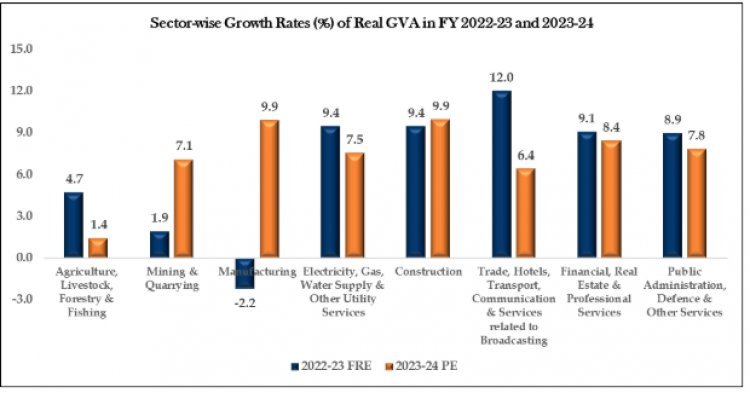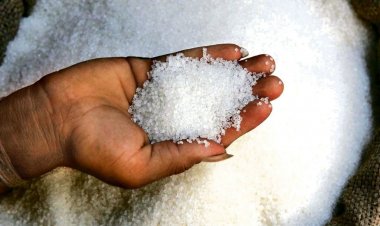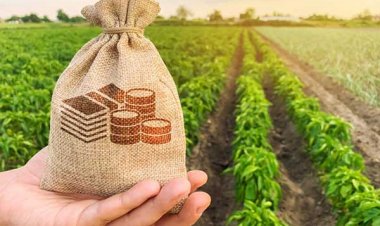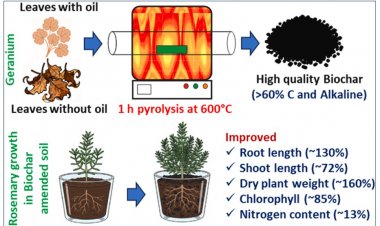Agricultural Growth Stagnates at 1.4 Percent in 2023-24, Down from 4.7 Percent in Previous Fiscal Year
According to the latest Gross Domestic Product (GDP) data for 2023-24 released by the Central Government, the agriculture and allied sector grew by 1.4 percent. In contrast, this sector had a growth rate of 4.7 percent in the previous fiscal year.

According to the latest Gross Domestic Product (GDP) data for 2023-24 released by the Central Government, the agriculture and allied sector grew by 1.4 percent. In contrast, this sector had a growth rate of 4.7 percent in the previous fiscal year, 2022-23. The Central Statistics Office (CSO) released the provisional GDP estimates on Friday for the financial year 2023-24. The data shows that the Gross Value Added (GVA) of the economy was 7.2 percent in 2023-24, compared to 6.7 percent in the previous year.
GVA, which is GDP minus taxes and subsidies, was initially estimated at 0.7 percent for the agriculture and allied sector in the government's second advance estimate. This has been revised to 1.4 percent in the latest estimate. While these figures are concerning, the true situation will become clearer once the Agriculture Ministry releases crop production figures, as early estimates indicate a decline in the production of most crops.
The agriculture and allied sector's share in GVA was 18 percent. In comparison, other sectors showed varied growth. Mining saw an increase, while manufacturing registered a 9.9 percent growth in GVA due to a low base effect following a 2.2 percent contraction last year. Construction grew by 9.9 percent, slightly higher than last year's 9.4 percent GVA growth. However, sectors such as hotels, trade, electricity, water, financial services, real estate, public administration, defense, and other services saw lower growth in 2023-24 compared to the previous year.
The agriculture sector's modest GVA increase from 0.7 percent to 1.4 percent raises concerns, especially given high food inflation and reported declines in the production of key crops like rice, pulses, sugarcane, cotton, and coarse grains. This modest growth, down from 4.7 percent in 2022-23, highlights the challenges facing the agriculture and allied sectors. Consequently, demand from rural areas for manufacturing and FMCG products remains weak.
Commenting on the GDP numbers, Dr Anish Shah, President, FICCI said, "The strong India GDP numbers are in line with our expectation and prediction in December 2023 of a 8 per cent GDP growth in FY24. The GDP growth rate of 8.2 percent for FY24 and 7.8 percent for Q4 FY24 is the highest among the major economies of the world making India the fastest growing major economy globally. Its a reaffirmation of India story as it shows Indian economy to be resilient and buoyant despite global challenges."
GDP expands 7.8pc in Q4, 8.2pc in FY24; agri sector growth decelerates to 0.6pc in Q4
India's economy growth slowed to a four-quarter low of 7.8 per cent in the January-March period, while the agriculture sector growth decelerated to 0.6 per cent from 7.6 per cent. At the same time, the annual growth rate for FY24 was pegged at 8.2 per cent, mainly on account of good showing by manufacturing, official data showed.
The growth propelled the Indian economy to USD 3.5 trillion and set the stage for achieving the USD 5-trillion target in the next few years. In the previous 2022-23 fiscal year, the economy grew 7 per cent.
The real GVA (gross value added) is estimated at Rs 158.74 lakh crore in 2023-24, against the FRE for 2022-23 of Rs 148.05 lakh crore, registering a growth rate of 7.2 per cent as compared to 6.7 per cent in 2022-23. The GVA growth in the manufacturing sector accelerated to 8.9 per cent in the March quarter against 0.9 per cent a year ago. However, agriculture sector growth decelerated to 0.6 per cent from 7.6 per cent.
GVA growth in mining was 4.3 per cent in the fourth quarter compared to 2.9 per cent in the same quarter of the previous fiscal. Construction grew 8.7 per cent in the quarter, up from 7.4 per cent in the corresponding period of 2022-23. The electricity, gas, water supply, and other utility services segment grew 7.7 per cent during the fourth quarter from 7.3 per cent in the year-ago period.
GVA growth in the services sector -- trade, hotel, transport, communication and services related to broadcasting -- was 5.1 per cent in the fourth quarter against a growth of 7 per cent a year ago. Financial, real estate and professional services grew 7.6 per cent in the March 2023 quarter compared to 9.2 per cent in the year-ago period. Public administration, defence and other services posted 7.8 per cent growth in the quarter against 4.7 per cent expansion in the same quarter a year ago.
The economic expansion was recorded at 7.8 percent during the January-March 2024, while it was 8.6 per cent in Oct-Dec 2023 and 8.1 percent in July-Sept 2023. The growth was 8.2 per cent in April-June 2023, as per data released by the National Statistical Office (NSO). The GDP grew 6.2 per cent in the January-March quarter of 2022-23.
The NSO, in its second advance estimate released in February, had projected the GDP growth for 2022-23 at 7.7 per cent. According to the NSO data, real GDP, or GDP at constant prices, is estimated to attain a level of Rs 173.82 lakh crore in 2023-24, against the first revised estimates (FRE) of GDP for 2022-23 of Rs 160.71 lakh crore. "The growth rate in real GDP during 2023-24 is estimated at 8.2 percent as compared to 7.0 per cent in 2022-23," it stated.
Nominal GDP, or GDP at current prices, is estimated to attain a level of Rs 295.36 lakh crore in 2023-24, against Rs 269.50 lakh crore in 2022-23, showing a growth rate of 9.6 per cent, it added. The real GDP in the March quarter of 2023-24 is estimated at Rs 47.24 lakh crore, against Rs 43.84 lakh crore a year earlier, showing a growth rate of 7.8 per cent.
Nominal GDP, or GDP at current prices in the March quarter of 2023-24, is estimated at Rs 78.28 lakh crore, against Rs 71.23 lakh crore in the year-ago period, showing a growth rate of 9.9 per cent.



 Join the RuralVoice whatsapp group
Join the RuralVoice whatsapp group









































